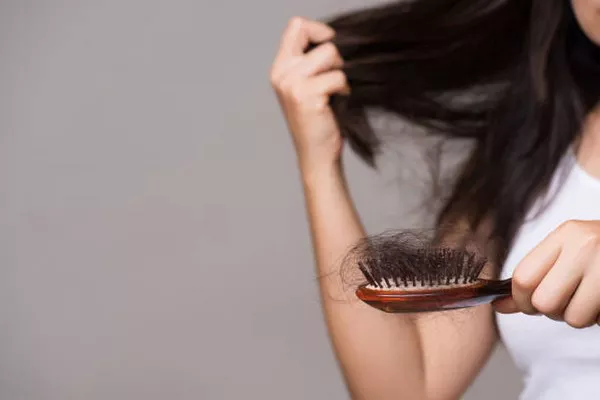Traction alopecia is a form of hair loss that affects individuals of various ages, genders, and ethnicities. It occurs as a result of prolonged tension or pulling on the hair follicles, often due to tight hairstyles. This essay will delve into the causes, symptoms, prevention, and treatment options for traction alopecia. By understanding this condition better, we can raise awareness and promote healthier hair practices.
I. Causes of Traction Alopecia
Traction alopecia primarily arises from repetitive and excessive tension on the hair follicles. This tension can be attributed to tight hairstyles such as braids, ponytails, buns, weaves, extensions, and even the habitual use of hair accessories like clips or bands. Additionally, certain hair treatments, such as chemical relaxers and hot irons, can weaken the hair, making it more susceptible to damage.
II. Symptoms and Progression
Traction alopecia often manifests in specific patterns, depending on the hairstyle causing the tension. Common symptoms include hair breakage, thinning along the hairline, receding hairline, and small red bumps or sores on the scalp. Initially, these symptoms may be mild and go unnoticed, but if the tension persists, the hair loss can become more pronounced and permanent. It is crucial to identify and address traction alopecia in its early stages to prevent irreversible damage.
III. The Impact of Hairstyles on Traction Alopecia
Hairstyles that involve tight braids, ponytails, or extensions place constant stress on the hair follicles. Over time, this tension can lead to inflammation and scarring, preventing hair regrowth. Certain cultural or fashion trends may contribute to the prevalence of traction alopecia, as societal beauty standards often prioritize sleek, neat hairstyles. Raising awareness about the potential risks associated with these styles is essential to promoting healthier alternatives.
IV. Prevention Strategies for Traction Alopecia
Preventing traction alopecia begins with adopting gentle hair care practices. Here are some strategies to minimize the risk:
Embrace looser hairstyles: Opt for looser braids, buns, or ponytails that do not pull excessively on the hairline.
Limit the use of hair extensions and weaves: While these styles can be appealing, they can also contribute to traction alopecia. Give your hair breaks from extensions to allow it to rest and recover.
Avoid excessive heat and chemical treatments: Heat styling tools and harsh chemicals weaken the hair, making it more prone to damage. Minimize their use or seek professional advice on how to minimize harm.
Alternate hairstyles: Frequent changes in hairstyles and avoiding consistently pulling on the same area can distribute tension more evenly, reducing the risk of traction alopecia.
V. Treatment Options for Traction Alopecia
If traction alopecia has already occurred, early intervention is crucial to promote hair regrowth and prevent further damage. Some treatment options include:
Changing hairstyles: Switching to looser, more hair-friendly styles allows the scalp to heal and reduces ongoing tension.
Medications and topical treatments: Minoxidil, an FDA-approved topical solution, can help stimulate hair regrowth. Consult with a dermatologist or trichologist to explore appropriate options.
Platelet-rich plasma (PRP) therapy: This procedure involves injecting concentrated platelets from the patient’s own blood into the scalp, promoting hair growth and healing.
Hair transplant surgery: In severe cases, where hair follicles have been irreversibly damaged, hair transplant surgery can be considered to restore hair density and coverage.
Conclusion:
Traction alopecia is a condition that affects many individuals and can have a significant impact on self-esteem and well-being.
By understanding the causes, symptoms, prevention strategies, and treatment options for traction alopecia, we can work towards minimizing its occurrence and promoting healthier hair practices.
Education and awareness play a vital role in preventing traction alopecia. Stylists and hair professionals should be knowledgeable about the condition and encourage clients to prioritize hair health over temporary fashion trends. It is essential to educate individuals about the potential risks associated with tight hairstyles and emphasize the importance of maintaining a balance between style and hair well-being.
Furthermore, cultural perceptions of beauty need to evolve to embrace a wider range of hairstyles that are gentle on the hair follicles. Celebrating natural hair textures and promoting styles that do not exert excessive tension can help reduce the prevalence of traction alopecia within different communities.
In addition to personal hair care practices, policymakers and regulatory bodies can also contribute to preventing traction alopecia. They can implement guidelines and regulations within the beauty industry to ensure that hair care products and procedures do not cause undue harm to the scalp and hair follicles. This includes stricter monitoring of chemical ingredients, establishing safety standards for hair extensions and weaves, and promoting the use of natural and gentle hair care methods.
In conclusion, traction alopecia is a hair loss condition caused by prolonged tension on the hair follicles, primarily due to tight hairstyles. It is important to raise awareness about this condition and its potential impact on hair health. By adopting preventative measures, such as opting for looser hairstyles, limiting the use of hair extensions, and avoiding excessive heat and chemical treatments, individuals can reduce their risk of developing traction alopecia. Early intervention and seeking appropriate treatment options are crucial for promoting hair regrowth and preventing further damage. By prioritizing hair health and embracing a variety of gentle hairstyles, we can minimize the occurrence of traction alopecia and promote healthier, more inclusive beauty standards. Let us strive for a future where everyone can enjoy beautiful hair without compromising its health.


